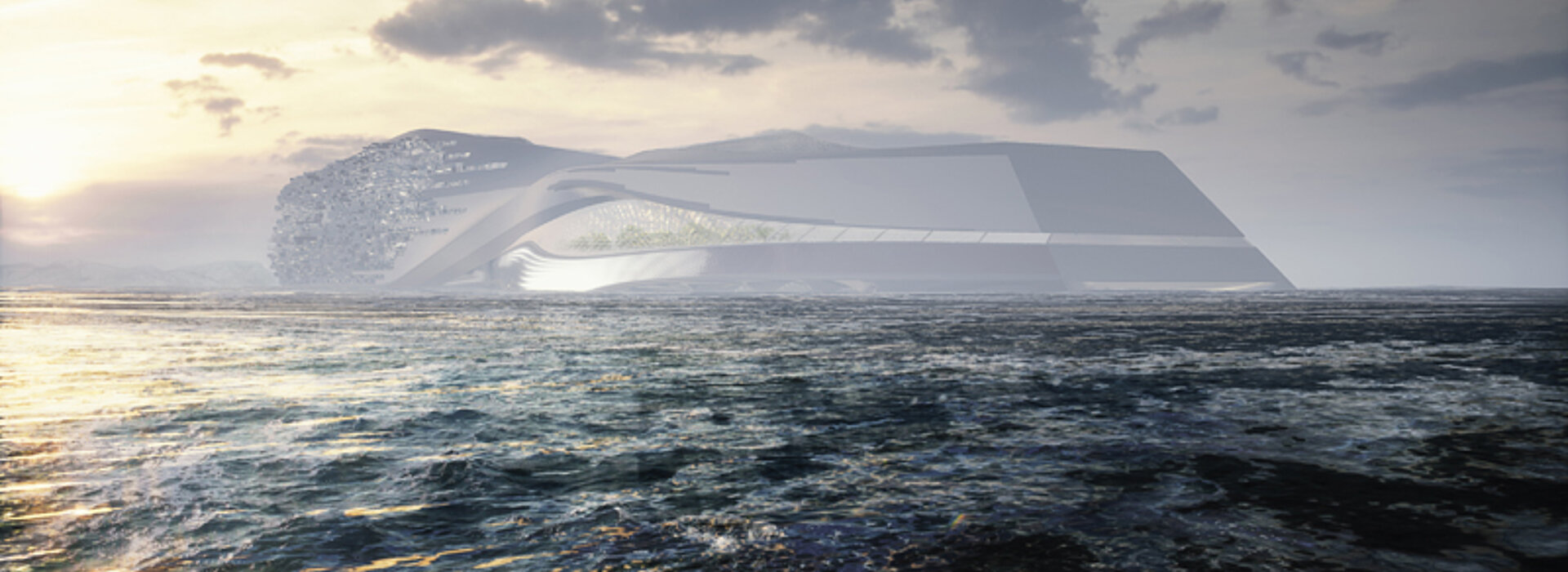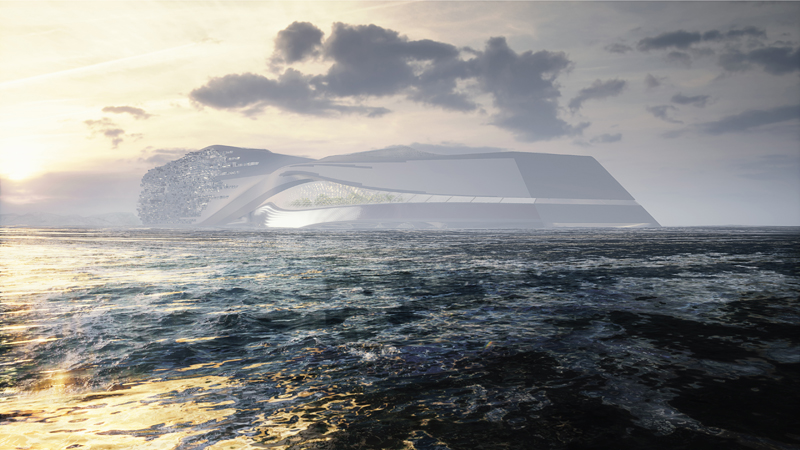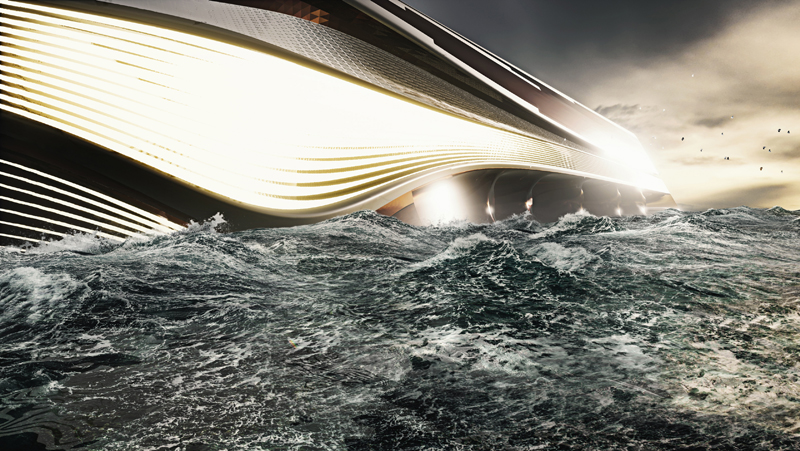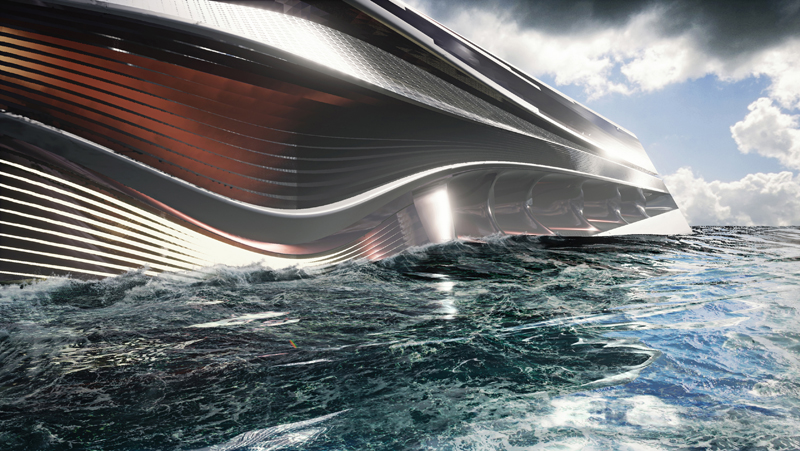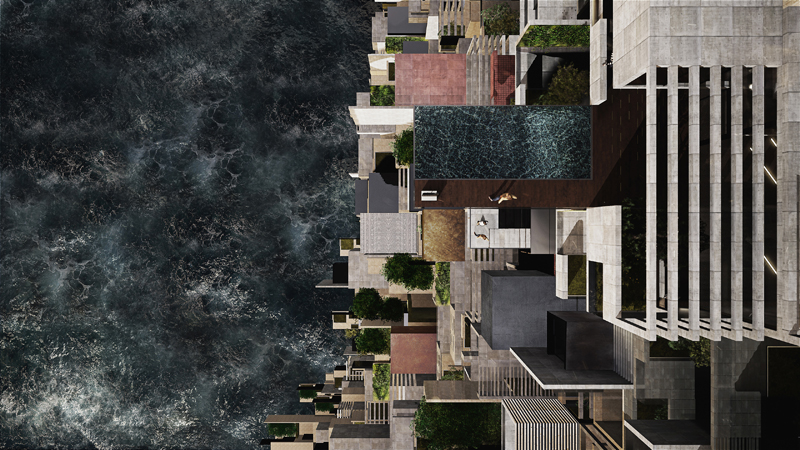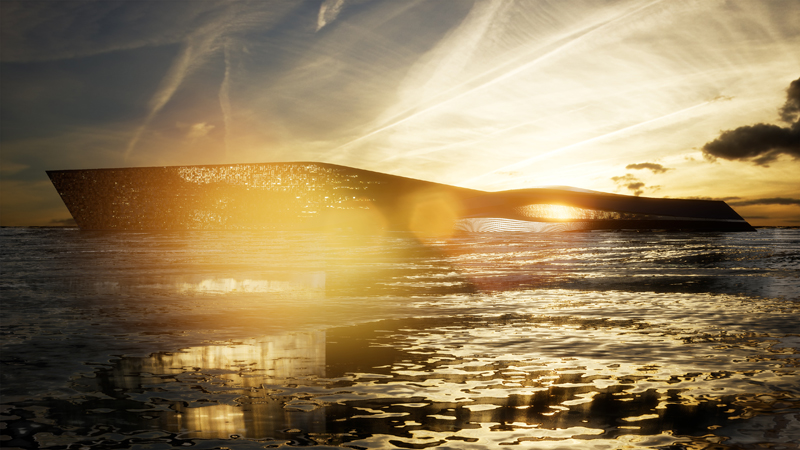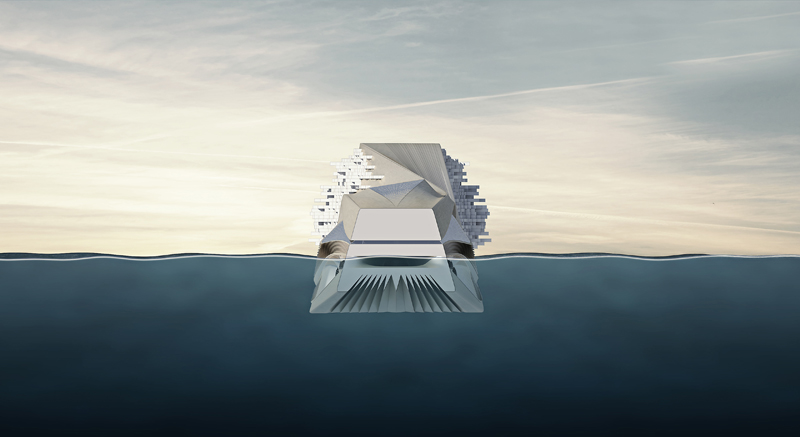SeaScraper Self-sufficient urban organism
- Year2017
SEASCRAPER is the idea of a mobile city sculpture that is able to provide power and food to its inhabitants autarkically by utilising the energy of the global conveyor belt.
Like a whale floating with the stream in search of food SEASCRAPER floats with the energy of the thermohaline circulation and transforms itself into an urban organism.
Most cities of the 21th century are still based on an antiquated, egocentric self-concept which requires that convenience goods and energy are brought to the cities from the periphery. For ecological reasons though, cities of future centuries will have to be capable of managing their food and energy supplies by themselves, as local and autarkically as possible. By converting the kinetic energy of the global conveyor belt SEASCRAPER manages to evolve into a self-sufficient urban organism forming a symbiotic relationship with both its inhabitants as well as the environment that surrounds it.
SEASCRAPER is structured in three sections: The first section is the pixel cloud the living area that is able to shrink and grow according to a zoning plan. It contains housing, hospitality and business areas, child and health care facilities as well as cultural and educational institutions.
The second section is the so-called energy city that consists of public gardens and vertical farms.
The third section consists of the hydroelectric turbine: It forms the complete lower part of SEASCRAPER and thus connects both ends of the sculpture. By using the energy of the global conveyor belt the turbine generates energy for the city. During this process it is also capable of filtering the water from trash that has been disposed into the oceans.
